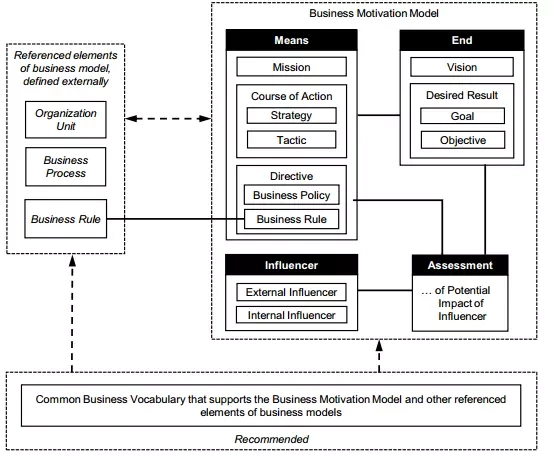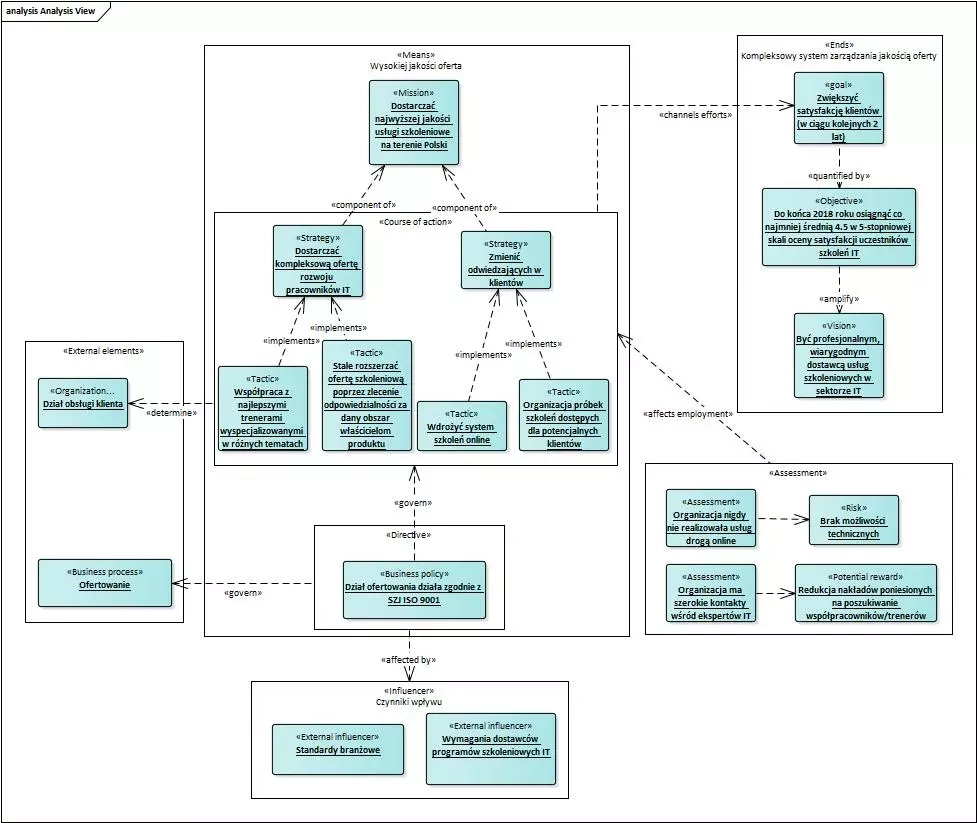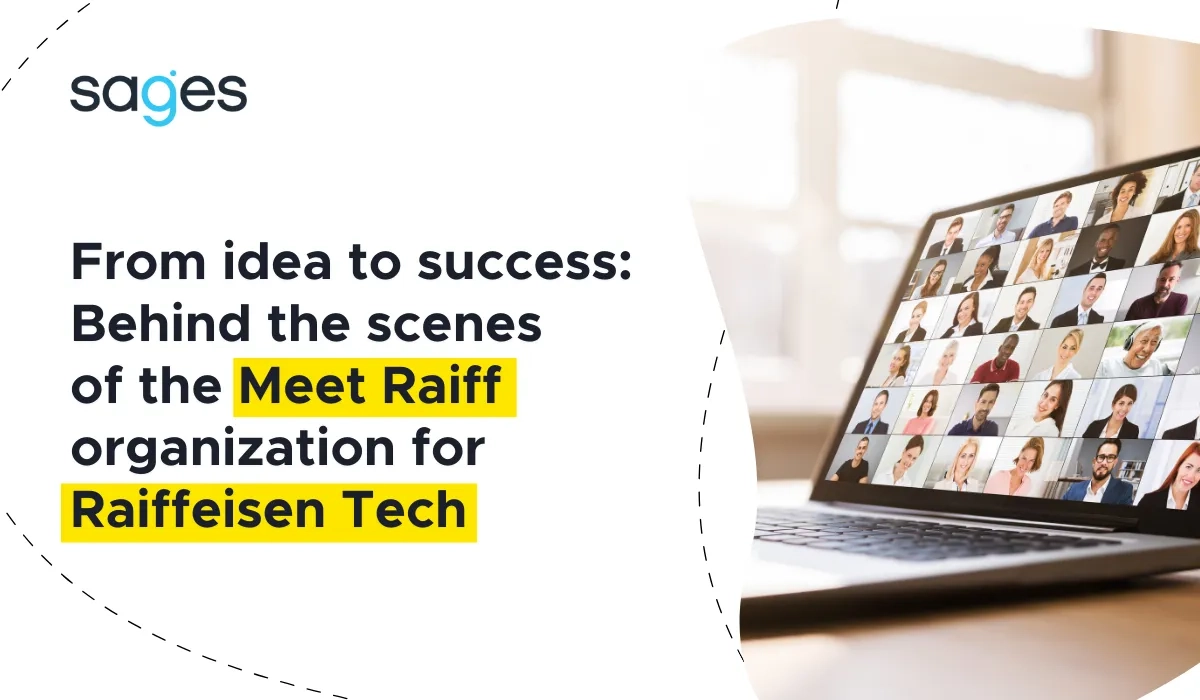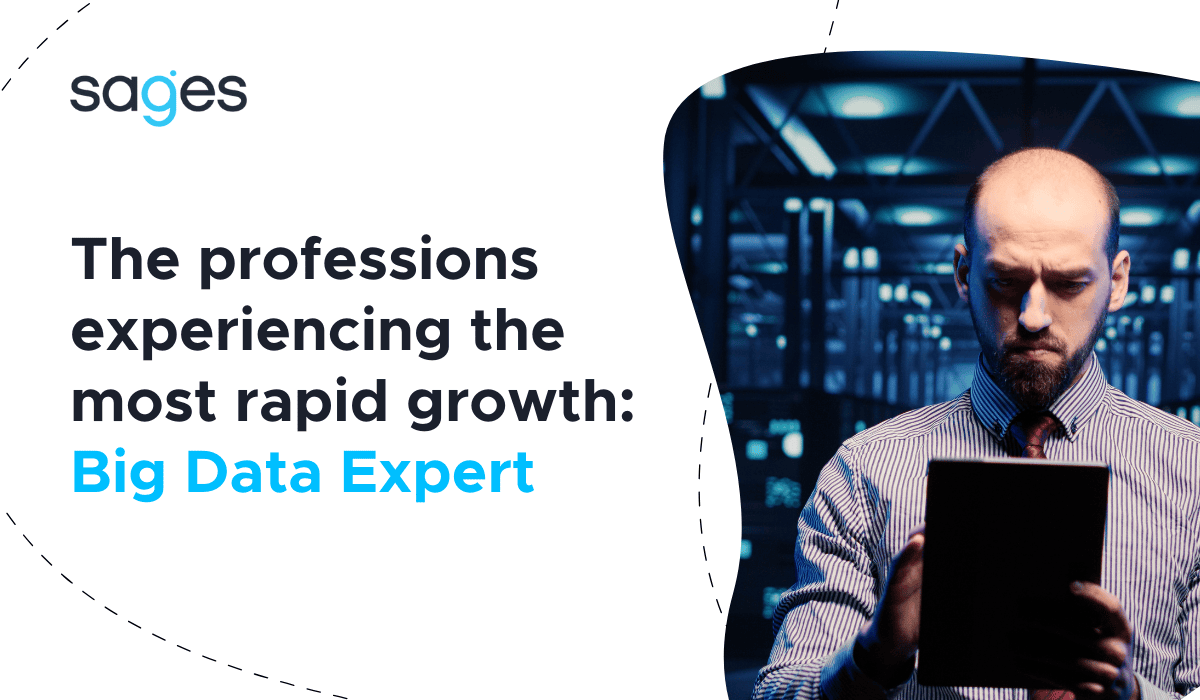"Couldn't you inform me which way I should go? That depends largely on where you would like to go --- replied the Cat-Beast. Actually, it's all the same to me, in which case it's also all the same which way you will go."
--- Alice in Wonderland, Lewis Carroll
If you don't know where you're going, every road is equally good and equally wrong. If you don't know what you need, everything will be equally good and equally bad.
It's time for the third installment of the series. After defining [quality]({{ "/in-search-of-lost-quality/" | prepend: site.baseurl }}) and [analyzing the stakeholder concept]({{ "/about-stakeholders-slow-quality/" | prepend: site.baseurl }}), let's move on to the next essential element of creating a strategy for a new offering[^1].
As a reminder --- the element of quality is the suitability of a product or service in a specific context, for specific stakeholders and according to the requirements or assumptions set. All of this context is a result of business considerations --- the specifics of a given organization, its mission, vision, goals, methods it uses. It is difficult to talk about the quality of any product without knowing the context in which this product is to function; it is difficult to define this quality or measure the degree to which it is met after the product is delivered. It is difficult to plan this quality, difficult to ensure, equally difficult to improve. It lacks a point of reference --- the necessary context.
So how to approach the planning and execution of an offering taking into account the business context?
First --- and most importantly --- you need to know that context. Which means you need to know, or be able to get answers to, the following questions:
- What does the organization you are targeting do? What business processes are carried out in it? What products are delivered? How does the organization deliver value to its customers, partners, etc.?
- What does the organization strive to achieve? What short-term and long-term goals does it have? How are these goals achieved? How is progress toward goals measured?
- Who is responsible for implementing the company's strategy?
The reader will rightly note that the above questions apply to a situation where we are targeting an organization with an offer. What about in the case of an offer aimed at individuals? Ordinary end users, users? In this case, we would be interested in:
- Who is the target audience we want to reach?
- What does he or she do? What is he or she pursuing? What problem or need do we want to address?
- With whom does he communicate or cooperate? What information does it exchange? In what ways?
- Why do we think this is a problem worth analyzing and solving? Do we have evidence to support our thesis?
The above questions cover only selected aspects that are worth knowing in order to have a broader perspective of the recipient's business environment --- whether corporate or individual. Sometimes, however, especially for larger organizations, it is worth pursuing a more mature business analysis and building a comprehensive model of the organization's functioning and motivation. To do this, one can rely on ready-made models and guidelines to more fully analyze the state of affairs and structure the information obtained. One such model is the BMM ( Business Motivation Model)[^2], a notation that complements OMG's[^3] offerings with strictly business modeling. BMM should not be confused with BPMN --- BPMN is a notation for modeling business processes, while BMM allows modeling at an even higher level of abstraction; at the level of mission, vision, goals, strategy --- in a word, at the level of a business plan. Figure 1 shows the general structure of BMM.

The basic concepts used in BMM are[^4]:
- Results ( ends) --- otherwise known as the expected state. Outcomes define what the organization wants to be. An example of an outcome might be developing a new product line or entering new markets. The definition of an outcome does not say how that outcome will be achieved --- it is defined within the means. The elements of the outcome are vision (vision) and desired results ( desired results), which in turn consist of goals (goals) and measures of goals (objectives).
- Measures ( means). They define the tools, capabilities, techniques, instruments, methods, etc. that will be used to achieve the expected (planned) state. Means do not include tasks --- this is defined by business processes --- or task responsibilities. The definition of measures consists of mission, courses of action and directives.
- Influencer (influencer) --- otherwise known as an impact factor. These are known factors that can cause changes that affect the achievement of the desired state or the applicability of measures. BMM distinguishes between external influencers and internal influencers.
- Assessment ( assessement). Assessment of an influencer on the possibility of achieving the expected state or applying measures. The results of the assessment are decisions that can change the measures and/or the expected state. The assessment technique recommended by BMM is SWOT[^5].
- External elements of the business model. These are three concepts belonging to other standards and used in BMM: organization unit, business process and business rule.
Complementing the above information, it is worth describing in more detail the concept of goals and goal measures.
Objectives describe the desired state of the organization, achieved through appropriate measures. In addition, objectives should be set in such a way that they continuously enable the realization of the organization's vision --- so there should be consistency at the business level (realized, for example, by means of linkages between elements of the BMM model --- see Figure 2 for an example). The definition of goals is usually quite general (as is the vision statement), while the measures of goals should be quantified and measurable[^6].
Table 1 Example of description of vision, goals and goal measures
| Element | Przykład | | --- | --- | | Wizja | Być profesjonalnym, wiarygodnym dostawcą usług szkoleniowych w sektorze IT | | Cel | Zwiększyć satysfakcję klientów (w ciągu kolejnych 2 lat) | | Miara celu | Do końca 2018 roku osiągnąć co najmniej średnią 4.5 w 5-stopniowej skali oceny satysfakcji uczestników szkoleń IT. |

What is implied by this information and the whole BMM concept?
The whole BMM model is a kind of visualization of the analysis of the problem posed, which can be, for example, the conception of a new business idea (value proposition). The development of a BMM model is a good exercise to verify the understanding of the problem, its validity, ways of implementation, risks. The information formalized with the BMM not only makes it possible to direct the project and project activities appropriately (through measures or impact factors), but also makes it possible to evaluate the results of the work --- this is what the objectives and measures of the objectives serve, which can be seen as criteria for the success of the project, an element that makes up the definition of the desired quality.
It is worth noting at this point that the BMM notation is independent of management or manufacturing methodologies --- it can be used in any context and approach. This is a valuable piece of information, useful especially in the case of attempts to defend against the implementation of this method justified by methodological differences --- attempts made on the principle of: "we are an agile organization, it won't work at our place", "we are at CMMI level 5[^7] --- it won't work at our place"... It will work. Basically, the only real obstacle to implementing the mindset required by BMM is the reluctance, due to various reasons, to analyze the problem causally.
Returning to the notation itself --- it is also worth mentioning the aspect of maintaining continuity in the models created at the business level and the later solution models. The business idea modeled using BMM can be efficiently linked to models describing the planned solution (offering) at a more detailed level --- for example, the business process mentioned in BMM can be modeled using BPMN. The business process, in turn, can be supported by an IT solution that is described using UML. Of course, a prerequisite for achieving continuity of the entire model is to ensure the completeness of the information and the compatibility of the notations used[^8]. This requires some effort, but pays off in time.
BMM, like BPMN or UML, is certainly an interesting topic, but what does it have to do with the business case? How do you tie BMM to quality?
We will try to answer this question in the next post in the series.
All posts in this series:
- [In search of lost quality]({{ "/in-search-of-lost-quality/" | prepend: site.baseurl }})
- [About stakeholders a few words]({{ "/about-stakeholders-slow-something/" | prepend: site.baseurl }})
- [How to pave the way for business]({{ "/how-to-pave-the-way-for-business/" | prepend: site.baseurl }})
- [What is a business case]({{ "/what-is-a-business-justification/" | prepend: site.baseurl }})
The title of the series refers to Marcel Proust's series of publications "In Search of Lost Time", which is a record of the memories of the novel's protagonist. In the last volume of the series, the protagonist decides to write a novel describing his life which --- in his mind --- will enable him to regain lost time. In my series, I will use a similar procedure --- the series will begin with the earliest "stages of life", moving towards more and more advanced and mature themes, to reach a conclusion at the end....
Footnotes
[^1]: As a reminder --- we have called by the term "offering" any product, service or, most generally, value provided to stakeholders by a producer (which in IT reality could be an IT service provider) [^2]: More on BMM: http://www.omg.org/spec/BMM/ accessed 07/05/2017 [^3]: Object Management Group, http://www.omg.org/ accessed 07.05.2017 [^4]: Business Motivation Model 1.3, http://www.omg.org/spec/BMM/1.3/ accessed 07.05.2017 [^5]: SWOT (Strengths, Weaknesses, Opportunities, Threats). Analysis of an idea/organization from four perspectives: strengths, weaknesses, opportunities AND threats [^6]: Measures of goals (objectives) are usually expressed according to SMART (Specific, Measurable, Attainable, Relevant, Time-Based) criteria [^7]: CMMI (Capability Maturity Model Integration) http://cmmiinstitute.com/ accessed May 07, 2017 [^8]: An example of how to ensure compatibility is to use notations provided by OMG --- the OMG organization strives to ensure consistency in the notations it develops.




